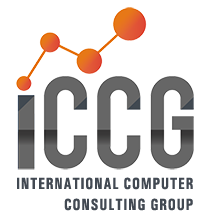Why Optimizing Supply Chain Logistics is Crucial
Efficient supply chain logistics are a key component of any successful business. When supply chain operations are streamlined, businesses can:
- Reduce Costs: By optimizing routes, consolidating shipments, and improving inventory management, companies can significantly reduce transportation and warehousing costs.
- Improve Customer Satisfaction: Faster delivery times and fewer stockouts lead to a better customer experience, encouraging repeat business and boosting customer loyalty.
- Enhance Visibility: Real-time tracking of inventory levels and shipments ensures businesses can respond quickly to changes in demand or supply disruptions.
- Increase Efficiency: Automation of routine tasks, such as order processing and inventory tracking, frees up valuable time for employees to focus on more strategic activities.
With so much riding on effective logistics management, having the right ERP system is not just a nice-to-have, it’s a must.
Read More
Topics: Supply Chain, Supply Chain Visibility, Supply Chain Operations, Supply Chain Management, Acumatica, Acumatica Partner, partnership, blog
Since 1988, ICCG has provided innovative information technology solutions, always with an eye on the changing market and technological horizon. ICCG’s top-notch professionals offer complete application and IT infrastructure services and support to meet key business needs. Our long-time global customers continue to rely on us to satisfy their diverse and growing business needs. New customers are choosing ICCG for a variety of reasons. Chief among them are:
A Customer First Approach.
Precious. Unique. Valuable. In today’s ever-changing marketplace, there are two kinds of customers: Precious or Previous. At ICCG, we prefer the former. And that’s how we treat them. Our customers are precious as well as unique and valuable.
In 30+ years of business, we’ve worked with more than 100 customers worldwide – committed to their success. Dedicated to a long-term relationship. That’s our promise and commitment.
Read More
Topics: ERP, Distribution, Supply Chain, Supply Chain Visibility, Supply Chain Network, Cloud BI, Enterprise Asset Management, Enterprise Software, Supply Chain Operations, Supply Chain Management, Infor CloudSuite M3, Infor CloudSuite ERP
As organizations begin to face post-COVID economic recovery, they’re finding that the new normal requires a new breed of software. Outdated solutions with layers of modifications and patched applications have become tangled webs, trapping organizations in decades-old processes.
Yet organizations know they need to update their solutions to stay relevant. During the global pandemic, we learned some difficult lessons about supply chain vulnerability that no one wants to repeat. We also learned that remote workers can still be productive if they have the proper tools in place. Now, more than ever, organizations are reexamining how work gets done and how processes can be streamlined. Automation is often the answer, and cloud computing offers the ideal platform under which this transformation can take place and even thrive.
Read More
Topics: ERP, Distribution, Supply Chain, Supply Chain Visibility, Supply Chain Network, Cloud BI, Enterprise Asset Management, Enterprise Software, Supply Chain Operations, Supply Chain Management, Infor CloudSuite M3, Infor CloudSuite ERP
While sound supply chain management principles can apply to practically every organization, each supply chain is as unique as the businesses it supports. Every supply chain must include its unique blend of elements, such as product mix, go-to-market objectives, and supplier management strategy that best fits its markets.
Read More
Topics: ERP, Distribution, Supply Chain, Supply Chain Visibility, Supply Chain Network, Cloud BI, Enterprise Asset Management, Enterprise Software, Supply Chain Operations, Supply Chain Management, Infor CloudSuite M3, Infor CloudSuite ERP
Industry analysts sometimes squabble over the pros and cons of single-tenant versus multi-tenant deployment. While single-tenant deployment may have been a viable solution for some organizations recently, multi-tenant deployment offers numerous benefits for organizations looking to modernize their operations. As a true cloud-based platform, multi-tenant deployment can provide vast storage, speedy implementation, and advanced security capabilities.Multi-tenant vs single-tenant cloud deployment
Read More
Topics: ERP, Distribution, Supply Chain, Supply Chain Visibility, Supply Chain Network, Cloud BI, Enterprise Asset Management, Enterprise Software, Supply Chain Operations, Supply Chain Management, Infor CloudSuite M3, Infor CloudSuite ERP
Whilst ERP (Enterprise Resource Planning) is the business management tool used across the organisation, a manufacturing execution system (MES) software is exclusively designed to be used in the factory environment to orchestrate, trace, record, and monitor the entire manufacturing process, from raw materials to semi-finished and finished goods.
Positioned as an intermediary layer between Enterprise Resource Planning (ERP) and process control systems, an MES empowers decision-makers with crucial data, enabling them to enhance plant floor efficiency and optimize production.
Read More
Topics: ERP, Distribution, Supply Chain, Supply Chain Visibility, Supply Chain Network, Cloud BI, Enterprise Asset Management, Enterprise Software, Supply Chain Operations, Supply Chain Management, Infor CloudSuite M3, Infor CloudSuite ERP
As the manufacturing world continues to evolve to meet new challenges, there’s a step-change in innovation for the products and services that are delivered and supported. Many industry insiders are expressing the need for a focus on driving sustainable (and profitable) business growth. Deloitte suggests digital investment and supply chain resilience as the key pillars. Partnerships are also increasingly important to achieving sustainable business growth, whether that’s upstream or downstream within your supply chain or enabling partners such as application and technology providers.
In all of those partnering scenarios, it’s important to have a common understanding of your desired outcomes, so you can ensure you’re all speaking the same language, which helps shorten the time to value. Manufacturing is shifting towards industry-specific applications and these applications are now nearly always delivered in the cloud to maximize adoption, flexibility, availability, and security, as well as reducing through-life cost of ownership. In fact, Gartner forecasts end-user public cloud spending to grow by 18% through 2021.
Read More
Topics: ERP, Manufacturing, Distribution, Process Manufacturing, Supply Chain, Supply Chain Visibility, Supply Chain Network, Industrial Manufacturing, Digital Manufacturing, Cloud BI, Enterprise Asset Management, Enterprise Software, Infor CloudSuite M3, Infor CloudSuite ERP
Managing global freight and ocean container movement now requires more dedicated insight as companies have expanded internationally. And no event outside of COVID-19 has exposed just how extensive, yet fragile, logistics networks and capacity flows have become over the last several decades.
To adapt, some manufacturers have adopted progressive supply chain approaches that move from "lean models to more flexible ones like "sense and respond." But not all businesses have successfully met the challenges.
Globalization forces supply chains to consider all events, from regional holidays and ocean weather patterns to geo-political turmoil and currency fluctuations. Moreover, 2020 introduced yet another element: navigating a global pandemic.
Read More
Topics: ERP, Distribution, Supply Chain, Supply Chain Visibility, Supply Chain Network, Cloud BI, Enterprise Asset Management, Enterprise Software, Supply Chain Operations, Supply Chain Management, Infor CloudSuite M3, Infor CloudSuite ERP
It’s a moment of enormous opportunity, with Industry 4.0 transforming the way businesses collect, process, and deploy data, and Maintenance 4.0 applying those tools and techniques to revolutionize asset management.
A strategic approach to Asset Performance Management (APM) helps you keep critical equipment and production lines up and running, using the mountains of operational data now available to help you track equipment performance, anticipate the need for maintenance, and prevent breakdowns before they occur. But even in steady economic times, and certainly in the midst of a global pandemic, the decision to embrace the new technology will always be guided by the bottom line: Will the cost of the new system be justified by the efficiencies and cost savings it delivers?
Infor’s Best Practice Guide, “Why your EAM strategy must evolve to increase food safety,” focuses on five specific, tangible benefits of APM, to help you make an informed decision on an approach that will soon be the price of entry for successful business operations in the 21st century.
Read More
Topics: ERP, Food & Beverage, Distribution, Supply Chain, Supply Chain Visibility, Supply Chain Network, Food Technology, Cloud BI, CloudSuite Food & Beverage, Enterprise Asset Management, Enterprise Software, Infor CloudSuite M3, Infor CloudSuite ERP
Cloud technology in the hospitality industry is changing the way that hotels, resorts, and gaming organizations serve guests. The deciding factor to success is in how simple it is for a guest to get what they want from a hotel via their own personal devices even before they arrive at a location. Essential mobile-based technology enables them to book a room, to set arrival times, to upgrade a room, add services, and more, all without necessarily having to make contact with staff.
That call for contactless solutions delivered via cloud PMS is a priority for the industry right now. This is for convenience reasons. Yet it also has social implications in an era of maintaining distance and limiting contact. How do cloud-based solutions make that easier than legacy on-premises solutions? Let’s take a look at some of the details.
Read More
Topics: ERP, Food & Beverage, Distribution, Supply Chain, Supply Chain Visibility, digital disruption, Enterprise Resource Planning, Food Technology, CloudSuite Food & Beverage, Enterprise Software, Retail Supply Chain, Supply Chain Operations, Infor CloudSuite M3, Infor CloudSuite ERP


%20(3).png)

%20(1).png)
%20(2).png)




.jpg)